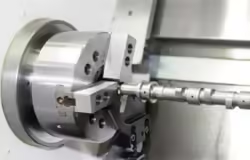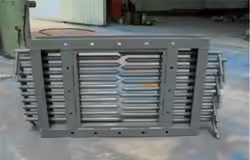
The Ultimate Guide to Steel Billet Labelling: Methods, Benefits, and Best Practices
Table of Contents
Introduction
Steel billet labelling is the process of marking steel billets with essential identifiers, such as batch numbers, chemical composition, dimensions, and production dates. This labelling ensures traceability, quality control, and inventory efficiency in steel manufacturing.
For example, a steel manufacturer producing high-strength billets for the automotive industry can use labelling to quickly track a batch that fails tensile testing, preventing defective steel from reaching clients. Modern digital solutions, like RFID or barcode labelling, make it easier to track billets through furnace, rolling, and storage processes, enhancing operational efficiency.
Importance of Steel Billet Labelling
Ensuring Traceability and Quality Control
Each labelled billet carries a unique identifier, enabling manufacturers to trace its production history. In real-world scenarios, if a batch of construction-grade steel billets shows micro-cracks during inspection, labelling allows engineers to trace back to the exact furnace and production shift, identify the cause, and prevent recurrence.
Supporting Efficient Inventory Management
Labelling simplifies warehouse operations by allowing operators to sort and locate billets quickly. For instance, in a steel service center handling thousands of billets daily, labels with batch numbers and dimensions reduce errors in picking the correct billets for shipment.
Compliance with Industry Standards
Steel billet labelling is essential for adhering to ISO, ASTM, and other regional regulations. For exported steel billets, labels documenting chemical composition and heat numbers ensure buyers receive certified and traceable materials.
Common Methods of Steel Billet Labelling
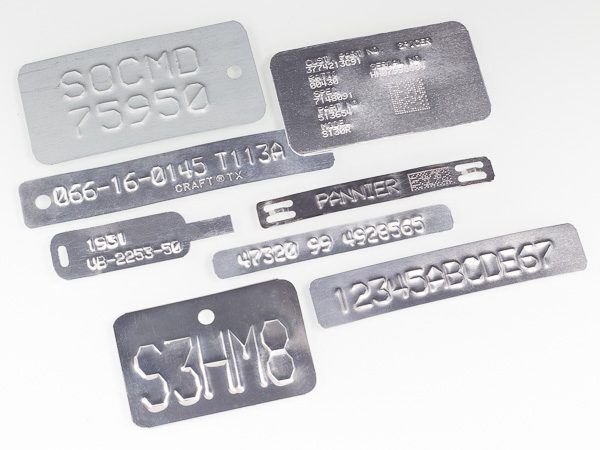
Stamping and Engraving
How It Works
Mechanical stamping or laser engraving permanently marks information onto the billet surface.
Example
A steel mill producing structural steel for bridges uses laser engraving to mark each billet with batch number, production date, and furnace code. This ensures durable and tamper-proof identification during long-term storage and transport.
Paint and Ink Marking
How It Works
High-temperature paints or inks are applied to billet surfaces for rapid identification.
Example
A manufacturer supplying steel billets for automotive panels uses color-coded paint marking to distinguish grades and sizes. Although less durable than engraving, it allows workers to quickly identify billets on fast-moving production lines.
Barcode and RFID Labelling
How It Works
Digital labelling uses barcodes or RFID tags to encode information for automated tracking and inventory control.
Example
An integrated steel plant uses RFID-tagged billets to track material from casting to final shipping, reducing errors and enabling real-time monitoring of inventory levels across multiple warehouses.
Key Information Displayed on Steel Billet Labels
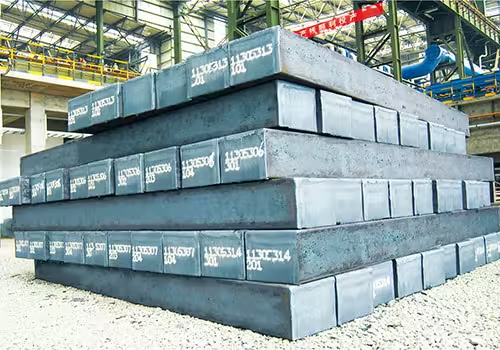
Batch Number and Heat Number
Identifies production batch and furnace cycle.
Example: In a plant producing high-tensile steel for aerospace applications, batch numbers allow engineers to verify heat treatment parameters and ensure material consistency.
Chemical Composition
Shows alloying elements and percentages.
Example: A supplier of stainless steel billets labels each billet with its chromium and nickel content to meet client specifications and corrosion resistance requirements.
Dimensions, Weight, and Production Details
Includes length, width, weight, production date, and shift.
Example: In heavy machinery manufacturing, knowing the exact weight and size of each billet allows optimized loading on rolling mills and accurate shipping calculations.
Table: Comparison of Labelling Methods and Key Data
| Labelling Method | Durability | Accuracy | Speed | Typical Cost | Best Application |
|---|---|---|---|---|---|
| Stamping/Engraving | Very High | Very High | Medium | Medium | Heavy-duty billets, long-term traceability |
| Paint/Ink Marking | Medium | Medium | High | Low | Quick identification, large-volume production |
| RFID / Barcode | High | Very High | Medium | High | Automated tracking, digital inventory |
This table helps manufacturers compare labelling methods quantitatively and choose solutions that align with production volume, cost constraints, and traceability requirements.
Benefits of Effective Steel Billet Labelling
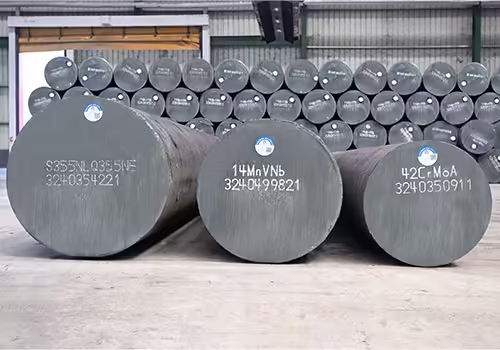
Enhanced Production Efficiency
Labels reduce misplacement and errors, allowing smoother workflow.
Example: A rolling mill processing different grades of steel for automotive parts can pick the correct billets at high speed, avoiding production downtime.
Improved Quality Control
Labeled billets make it possible to trace defects to specific batches or furnace cycles, allowing quick corrective actions.
Example: If a billet used in a construction project fails tensile strength testing, the batch number allows engineers to investigate and resolve the root cause efficiently.
Compliance and Safety Assurance
Labelling ensures adherence to regulatory standards, which is critical for exported steel billets and certified construction materials.
Data-Driven Insights
Digital labelling, like RFID, allows collection of production, inventory, and handling data, enabling predictive maintenance, workflow optimization, and cost analysis.
Challenges in Steel Billet Labelling
Harsh Industrial Conditions
Extreme temperatures and rough handling can affect label durability, especially paint or ink.
Example: Billets in a foundry handling 1200°C casting temperatures require engraving or laser marking for reliable identification.
Human Error in Manual Labelling
Manual stamping or painting can lead to mislabelled billets, affecting traceability and inventory accuracy.
Limitations of Digital Systems
RFID or barcode systems may fail under metallic interference or extreme heat, requiring protective solutions and hybrid approaches for reliable performance.
Choosing the Right Labelling Method

Stamping vs Paint vs RFID/Barcode
Each method offers different strengths and weaknesses:
- Stamping/Engraving: Best for durability and long-term traceability, ideal for billets in heavy machinery or construction projects.
- Paint/Ink: Efficient for fast, large-volume production but less durable.
- RFID/Barcode: Perfect for digital tracking and inventory automation in modern steel plants.
Practical Considerations
- Production volume and speed
- Handling and storage conditions
- Budget and long-term maintenance
- Integration with ERP or digital management systems
Conclusion
Steel billet labelling is essential for traceability, quality control, production efficiency, and regulatory compliance in modern steel manufacturing. By understanding labelling methods, key data, and their real-world applications, manufacturers can reduce errors, optimize workflow, and ensure high-quality steel supply.
Proper labelling supports both manual and automated tracking systems, enabling digital integration, predictive maintenance, and safer handling of steel billets across the production and logistics chain.
FAQ
What information should a steel billet label include?
Labels usually contain batch number, heat number, chemical composition, dimensions, weight, and production date/shift.
How can labels withstand harsh industrial conditions?
Engraving, stamping, or heat-resistant paint ensures durability even under high temperatures and rough handling.
Is RFID better than traditional stamping or painting?
RFID is ideal for real-time inventory tracking and automation, while stamping ensures permanent, tamper-proof identification.
How does steel billet labelling improve traceability and compliance?
Unique labels enable manufacturers to track production, verify quality, and comply with international standards, reducing risk of defects reaching clients.
Can labelling prevent errors in large-scale steel production?
Yes. For instance, color-coded paint markings combined with batch numbers help operators quickly sort thousands of billets, reducing misplacement and processing errors.




